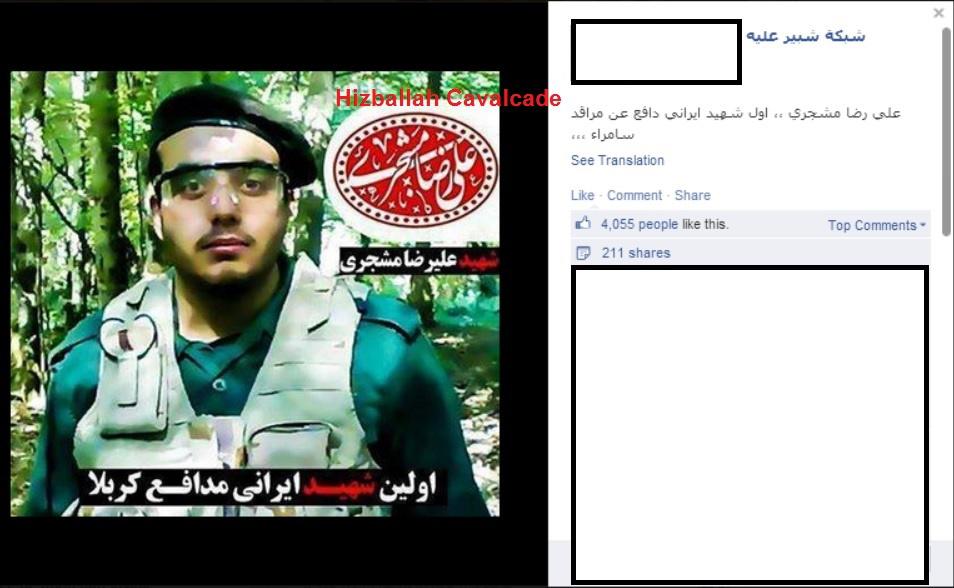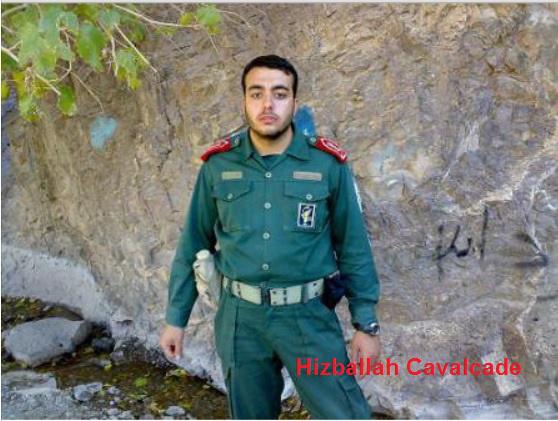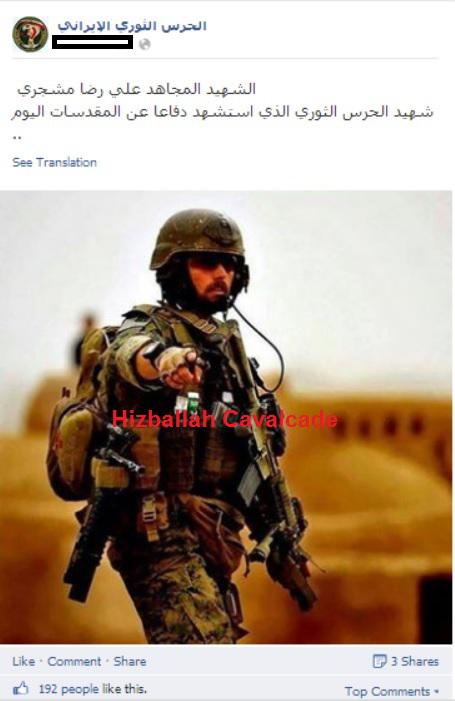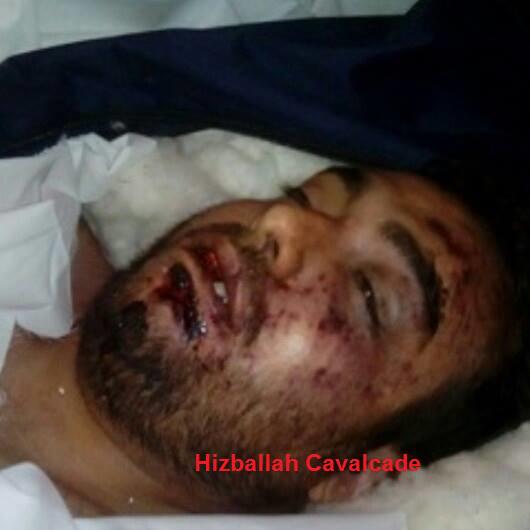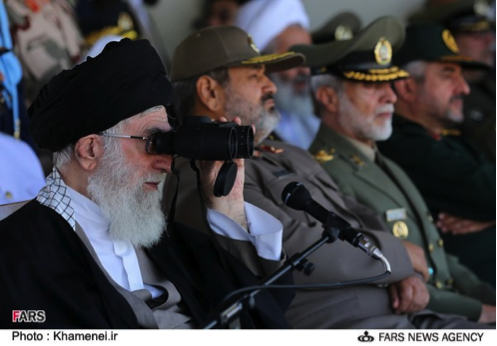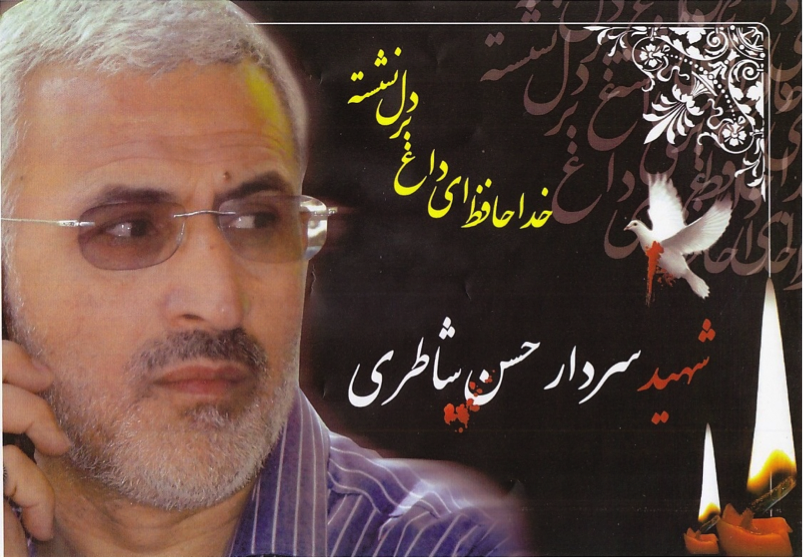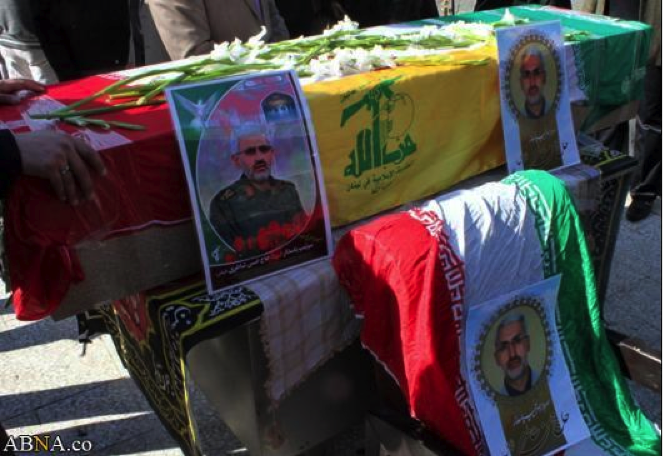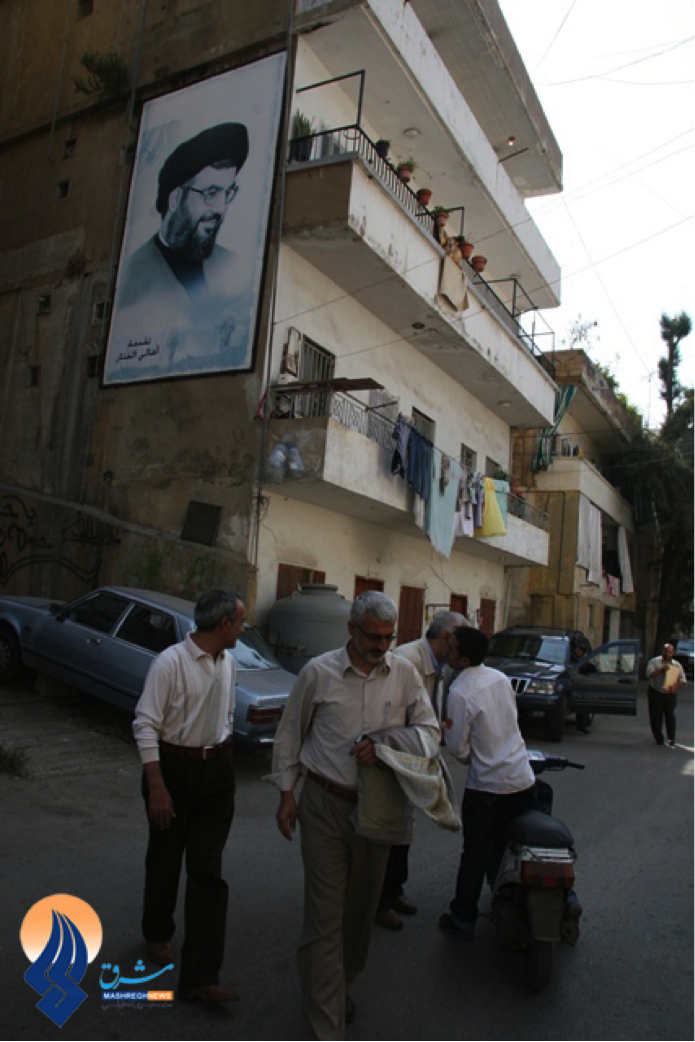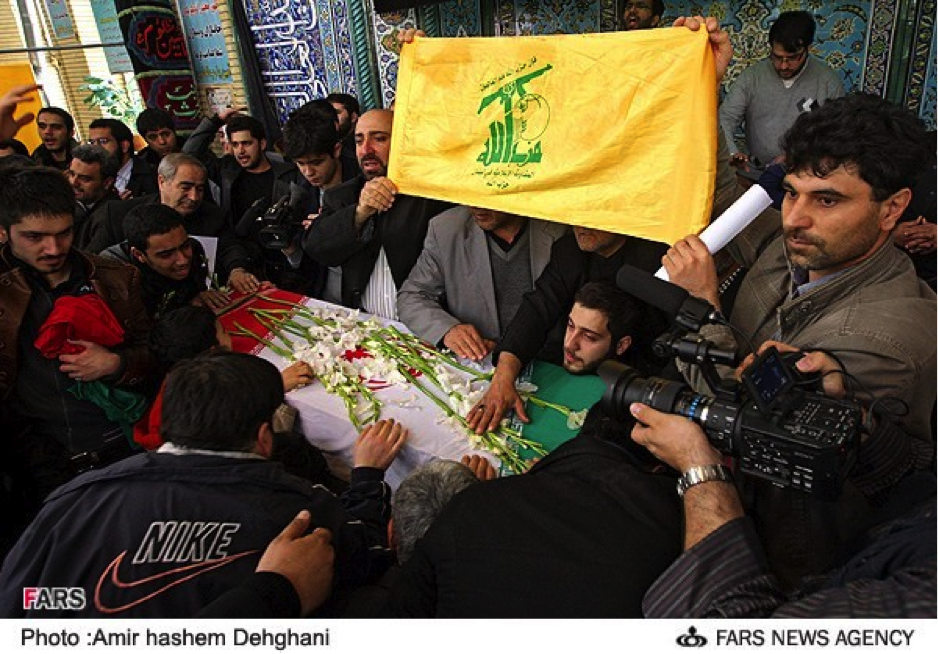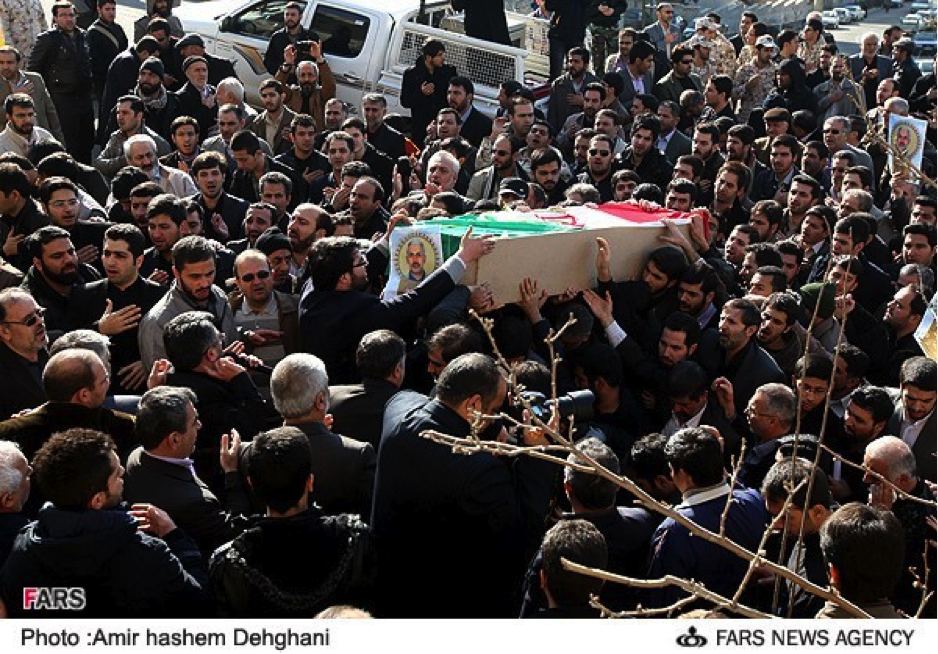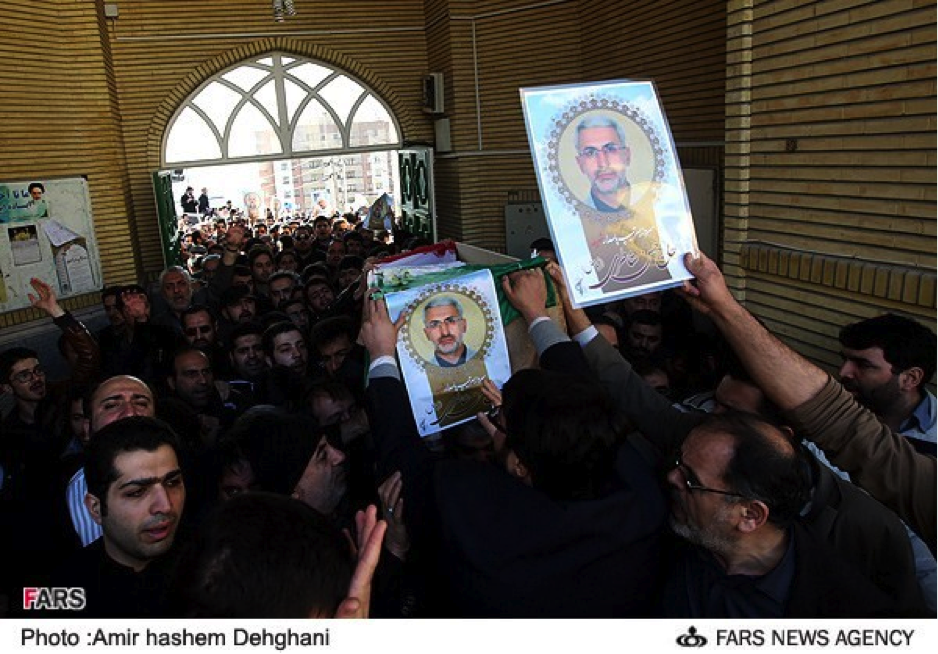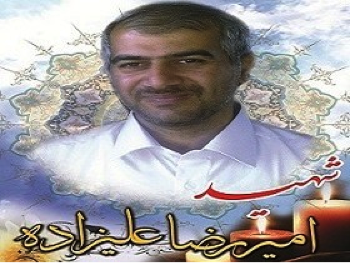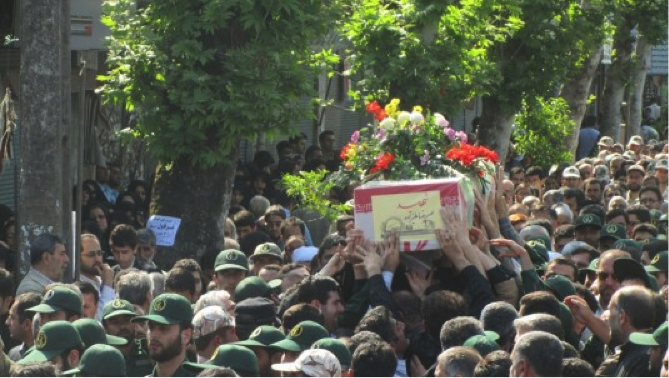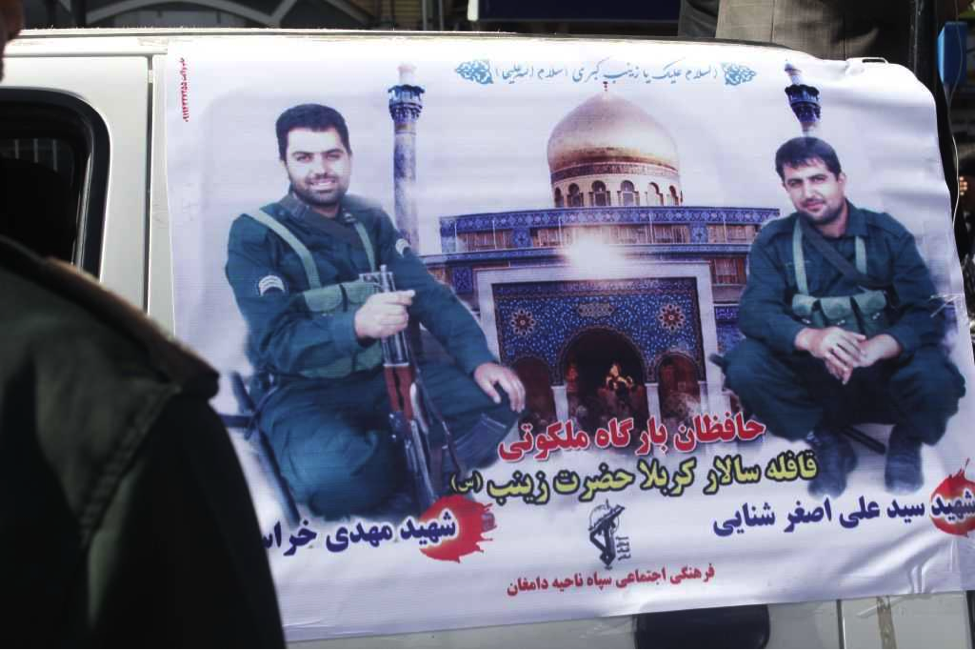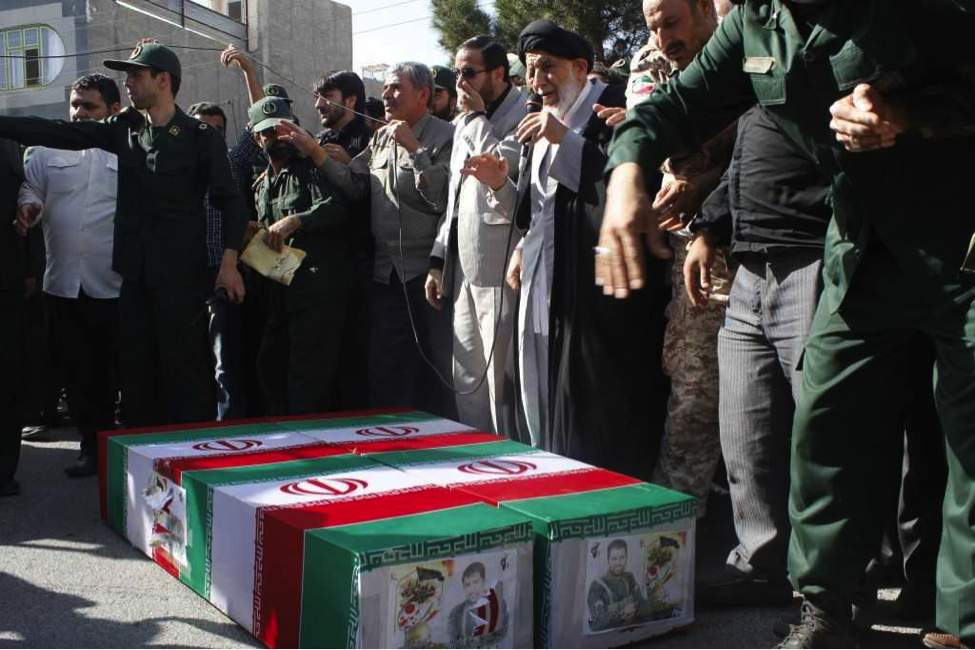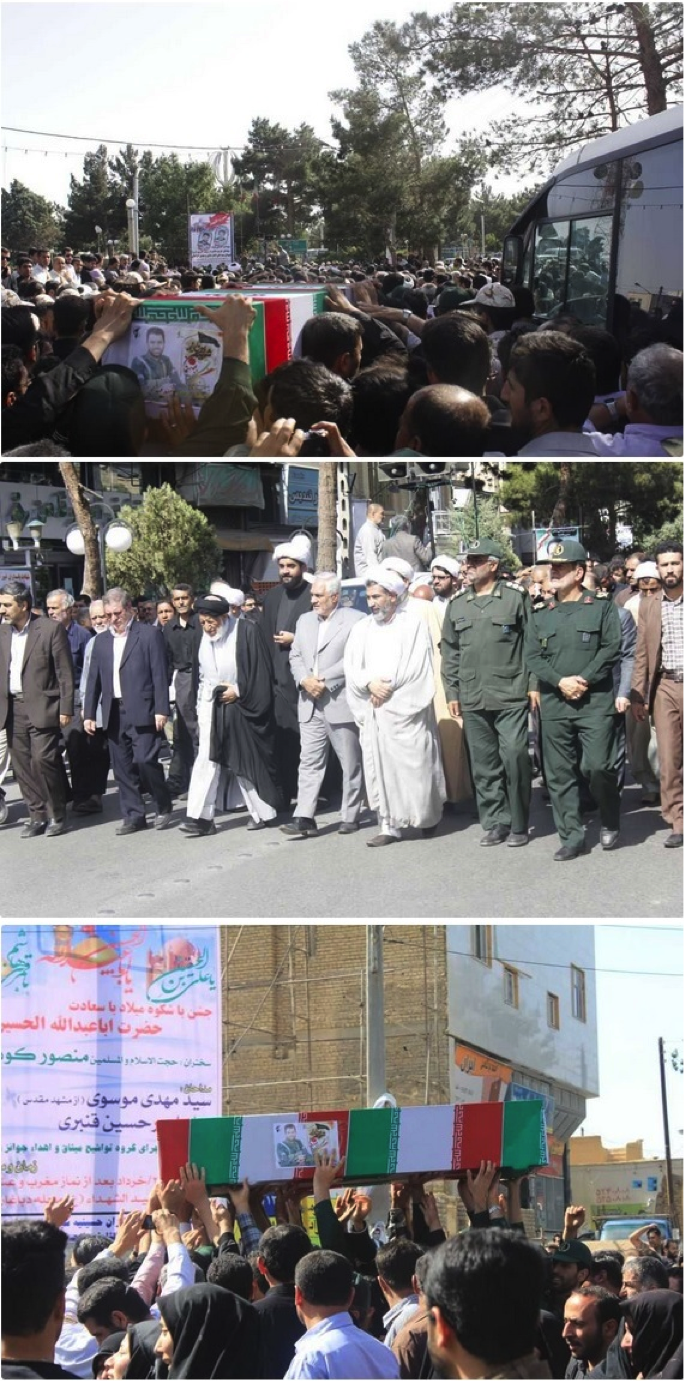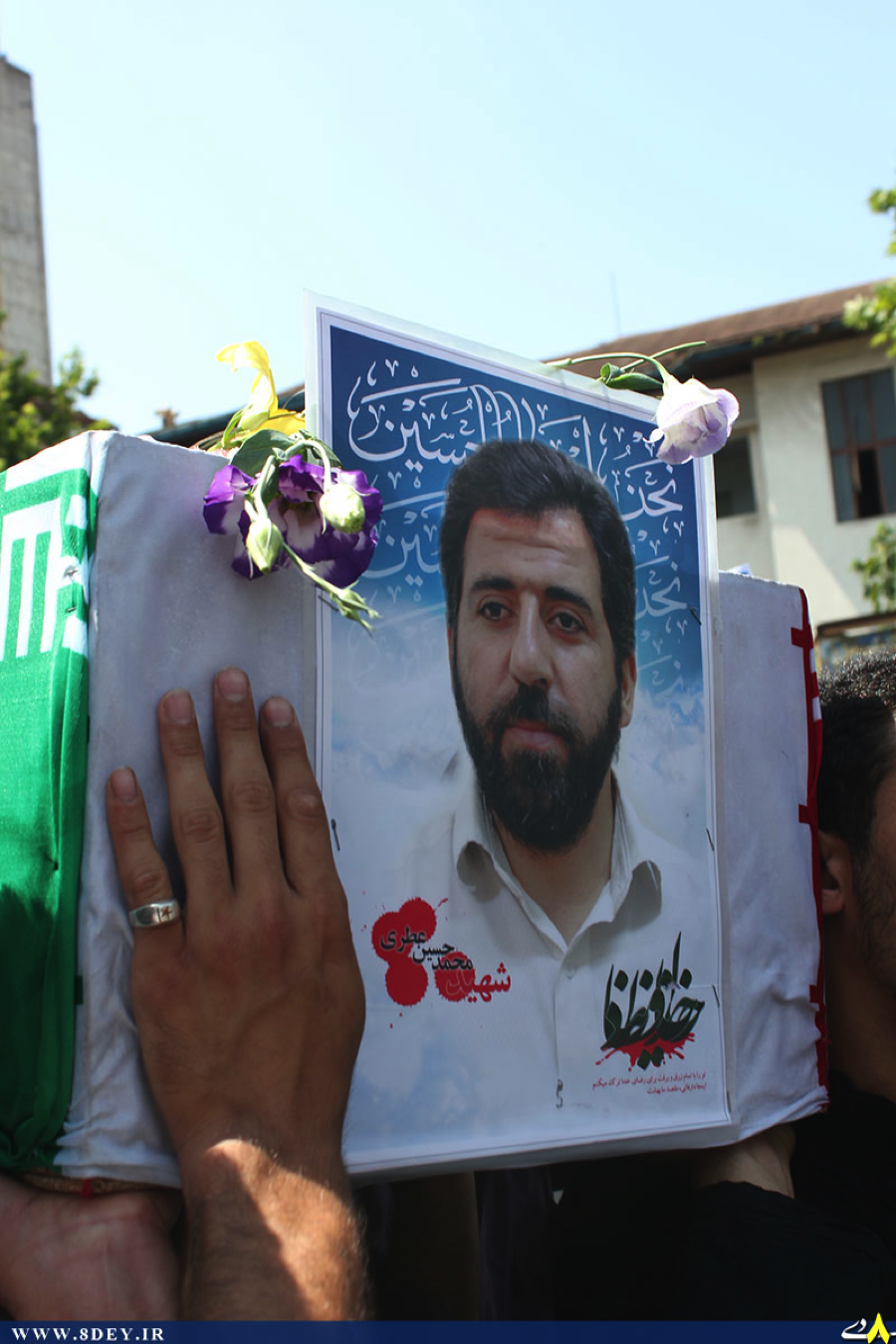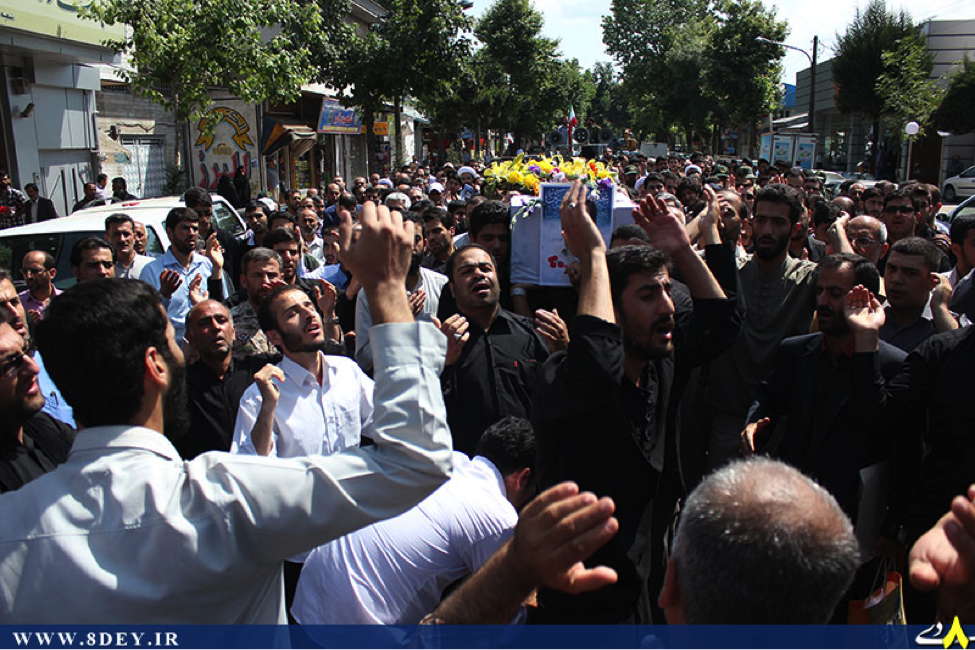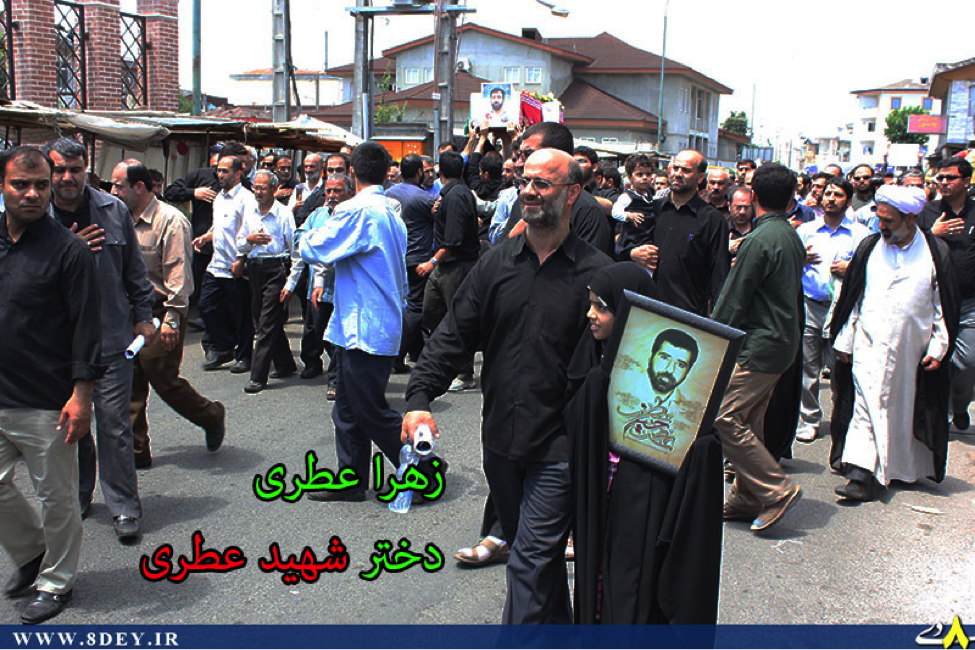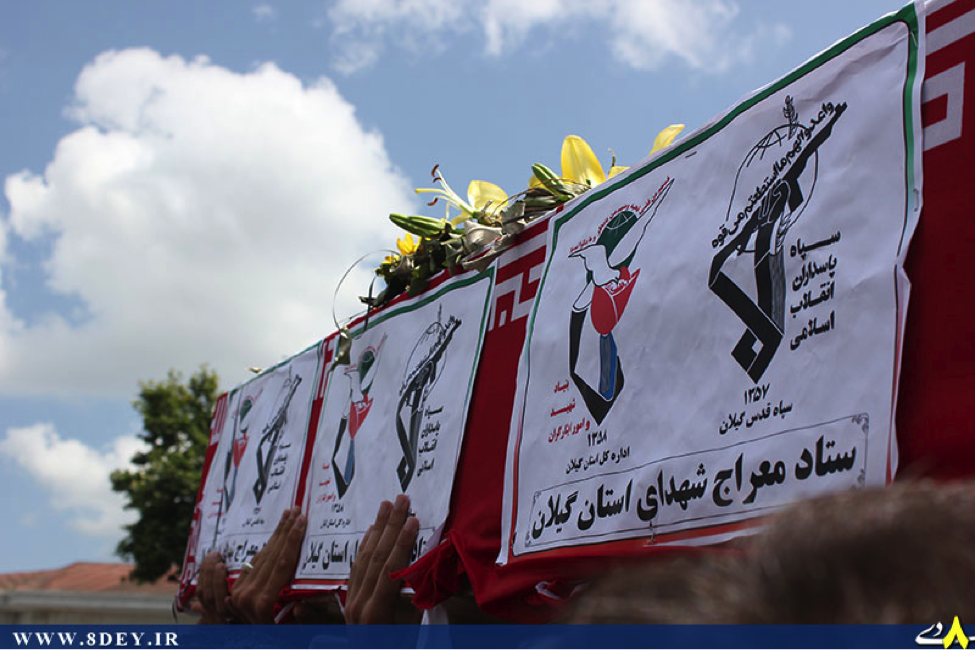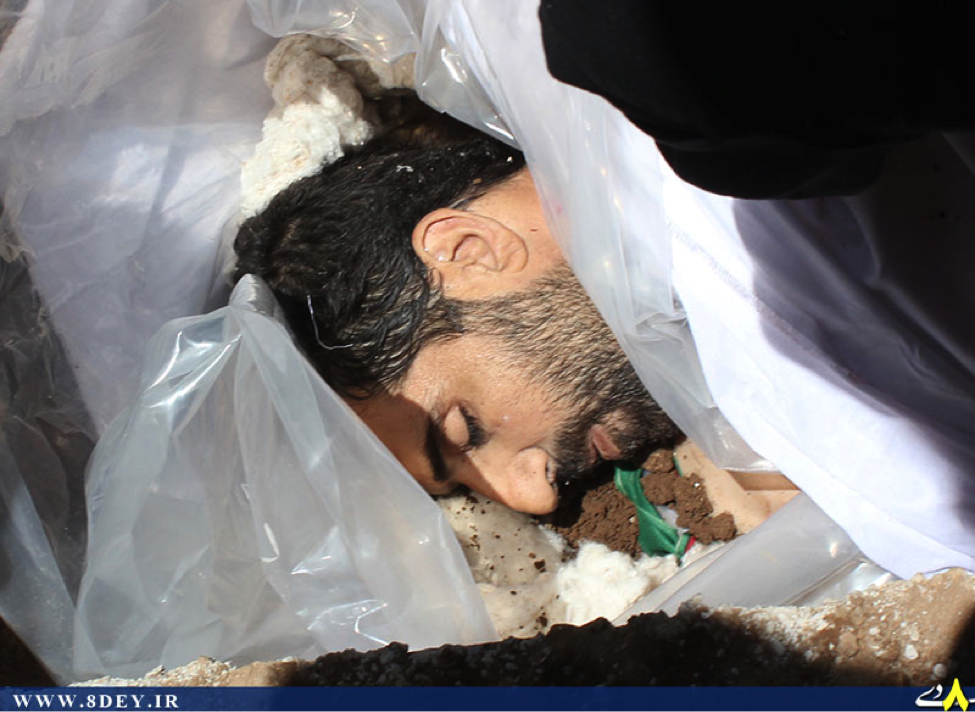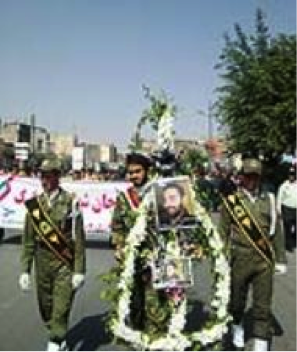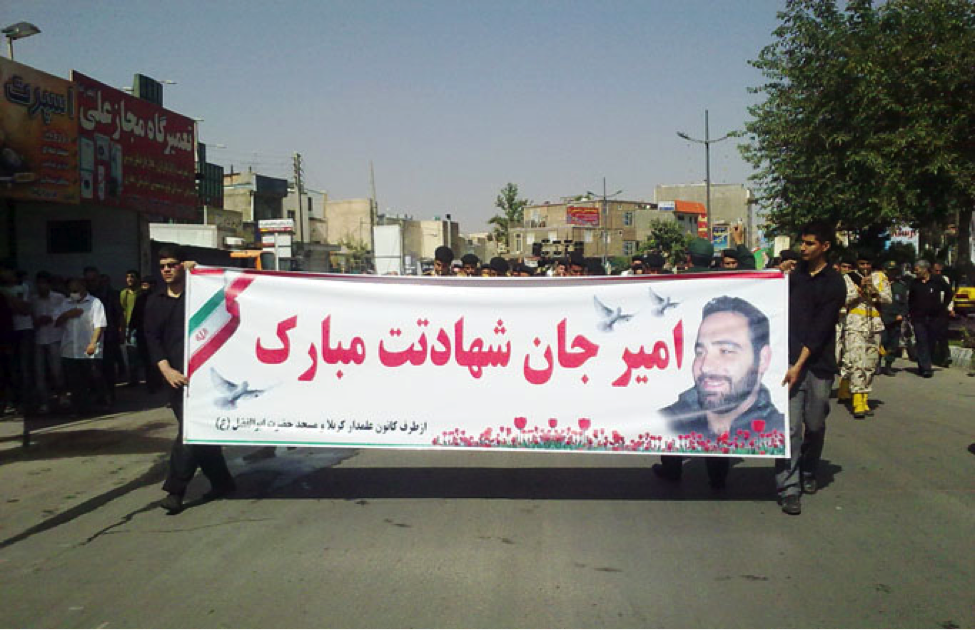NOTE: For prior parts in the Hizballah Cavalcade series you can view an archive of it all here.
—
Asa’ib Ahl al-Haq’s Liwa’a Kafeel Zaynab
By Phillip Smyth ([email protected])
Click here for a PDF version of this post
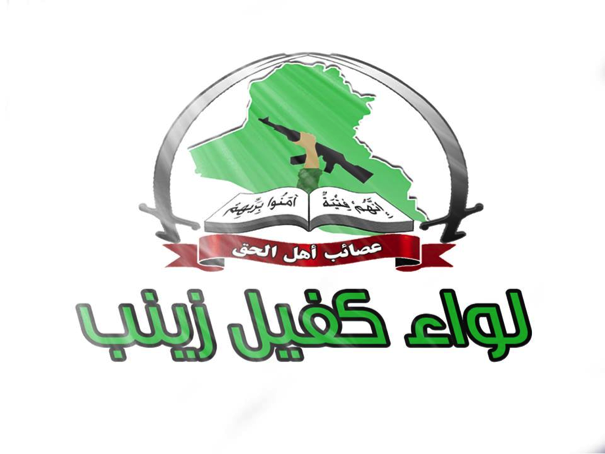
Figure 1: One version of Asa’ib Ahl al-Haq’s Liwa’a Kafeel Zaynab logo.
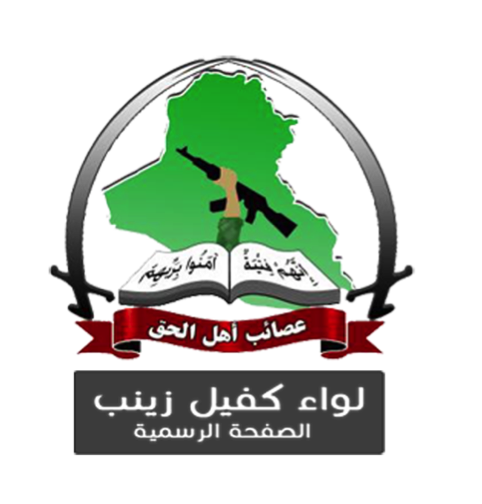
Figure 2: AAH-LKZ’s symbol features the normal AAH logo with the words, “Liwa’a Kafeel Zaynab” below it. This photo comes from AAH-LKZ’s official Facebook page (as denoted by the writing, “al-Safa al-rasmeea”, meaning “The official page”, underneath “Liwa’a Kafeel Zaynab”).
Formed in 2006 when it split from Muqtada al-Sadr’s Jaysh al-Mahdi, the Shia Islamist, Iraq-based Asa’ib Ahl al-Haq (League of the Righteous, or AAH) was created with the help of Lebanese Hizballah and the Iranian Revolutionary Guard Corps.[1] During the Iraq War, AAH was responsible for a number of high-profile attacks on Coalition forces, including kidnappings and the use of advanced Explosively Formed Penetrators (EFPs) against armored vehicles.[2] Following the pullout of American soldiers from Iraq, the group claimed it would consider giving up its arms and pursue a political strategy.[3] However, despite allying itself with Iraqi Prime Minister Nouri al-Maliki, AAH retained its militia and has been sending some of these forces into Syria.[4]
When the first martyrdom announcements and funerals were held for Iraqi Shia who had been killed fighting for pro-Assad militias in Syria, it became clear that AAH was a main supplier of fighters (see earlier Hizballah Cavalcade “Roundups of Iraqis Killed in Syria” Parts 1, 2, and 3). Via these funeral announcements, the makeup of the main foreign-staffed Shia militia in Syria, namely Liwa’a Abu Fadl al-Abbas (LAFA), was shown to be from AAH. AAH did little to hide their involvement regarding their sending of fighters to Syria. Large public funerals have been held in Iraq since the spring of 2013 and numerous AAH propaganda posters featuring their involvement in Syria have been released.
Albeit, it was a rarity for groups like LAFA to make an official written statement over social media or on forums stating AAH was a supplier. Instead, the inference AAH was supplying fighters to the group could be made by looking at the AAH imagery for their dead, which was then reposted by LAFA.
However, starting at the end of May, 2013 a number of videos (posted to YouTube) explicitly claimed Asa’ib Ahl al-Haq’s fighters were in Syria. This differed from the more typical rolling of AAH personnel into the ranks of LAFA or other militias. While these videos were sporadic, they were the first piece of a trend which would culminate in the announcement of a unique organizational name for AAH’s force deployment in Syria.
The major shift in addressing AAH’s involvement in the war in Syria took place in July. Instead of claiming AAH members were part of other Shia militia groups, AAH decided to announce the presence of the Asa’ib Ahl al-Haq-Liwa’a Kafeel Zaynab (AAH-LKZ or League of the Righteous-Supporters [or Sponsors] of Zaynab Brigade). The group is not a “New militia”. Instead, AAH-LKZ is a name for the group of AAH personnel who are in Syria. In some ways, it is comparable to how some militaries have fielded expeditionary forces.
As soon as the AAH-LKZ was announced on Facebook, the group also released a number of films on an official YouTube page. AAH-LKZ’s Facebook page also has (since the last count on August 13, 2013) three mirror sites. This is likely due to the fact that many Hizballah and Liwa’a Abu Fadl al-Abbas Facebook pages have been banned by the website.
AAH-LKZ has been quite prolific in their postings of unique photographs showing the group’s operations in Syria. In some cases, the main page (which has around 33,000 members) has posted five unique photographs in one day. Compared to other Shia militia Facebook pages, such a release of original images is quite uncommon.
Primarily, AAH-LKZ’s military maneuvers utilizing snipers and machine-gun teams are showcased. Additionally, their use of mortars, rockets, and possibly armored vehicles has also been featured. Photos of the group’s martyrs are also posted on the page.
AAH-LKZ has also posted a number of propaganda videos on an official YouTube station. Many of the videos mock Syrian rebels, showing mishaps the rebels have had with their weapons or rebels being successfully attacked. In a surreal twist, AAH-LKZ starts all of their officially released videos with a clip the group’s video editor(s) cut from the Mel Brooks’ 1987 comedy, Spaceballs.[5]
AAH-LKZ’s Imagery & Videos From the Battlefield

Figure 3: AAH-LKZ members pose with a mixture of Kalashnikov-type rifles, Dragunov-type sniper rifle, an RPG-7, and a PKM machine gun.

Figure 4: AAH-LKZ members pose with a mixture of Kalashnikov-type rifles, Dragunov-type sniper rifle, RPG-7s, and a PKM machine gun.
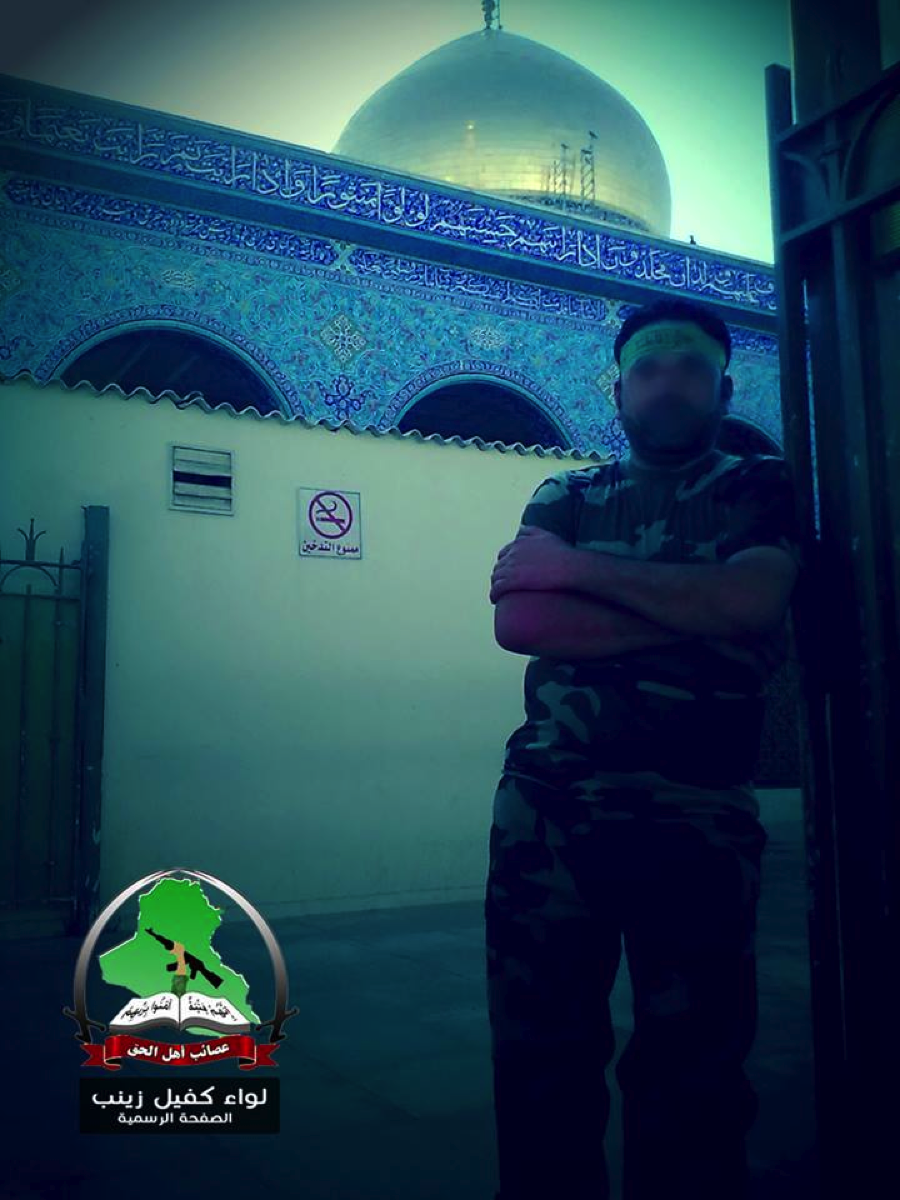
Figure 5: An AAH-LKZ fighter stands with the Saydah Zaynab Shrine in the background.
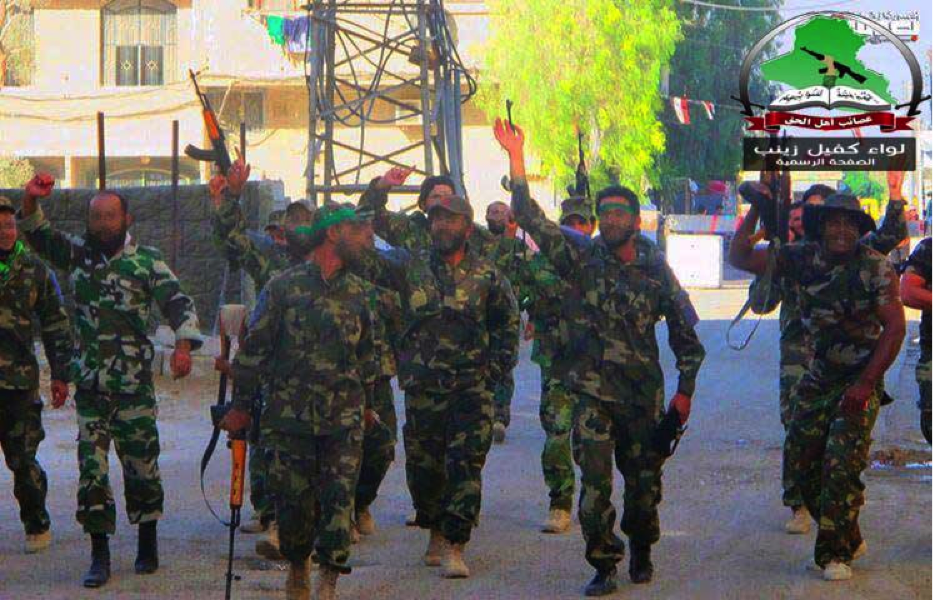
Figure 6: A shot of AAH-LKZ fighters celebrating in a Syrian street.
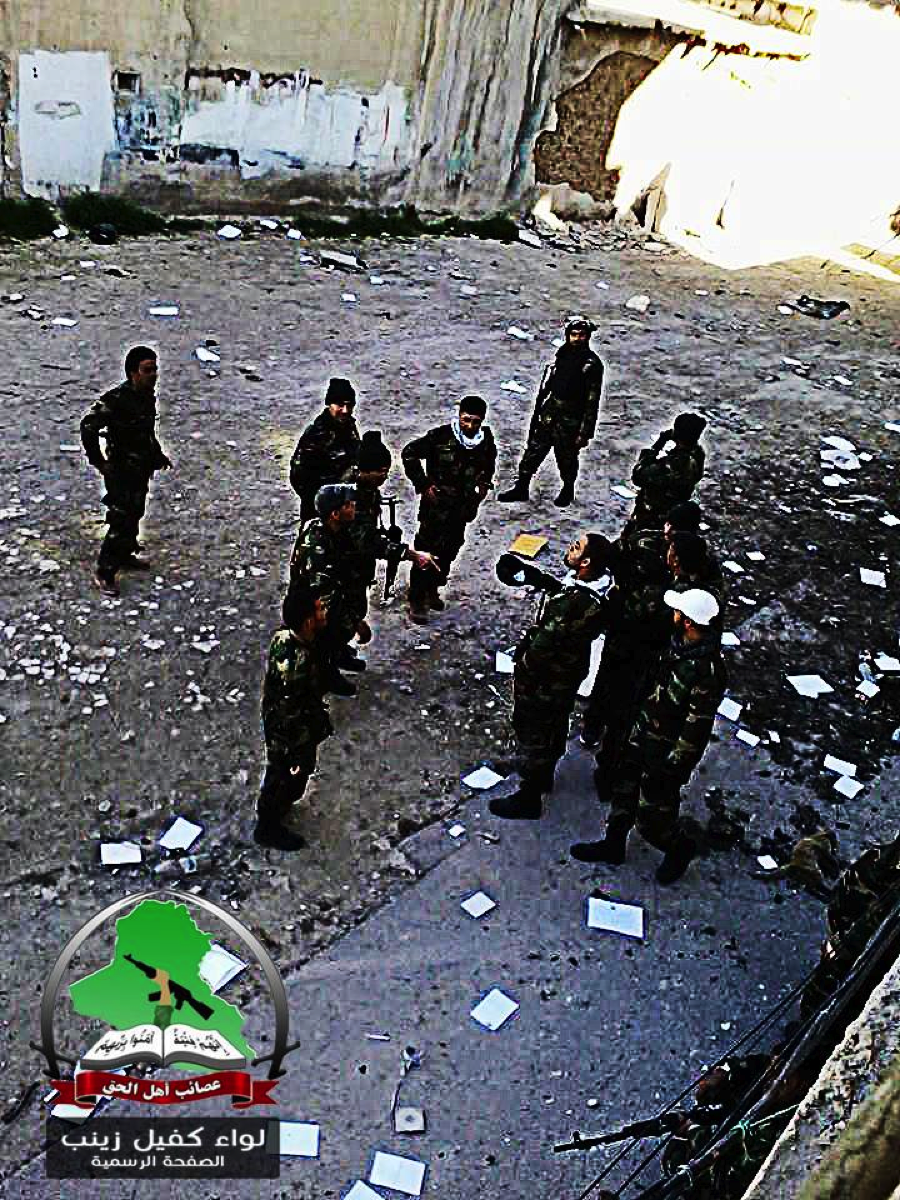
Figure 7: An edited photo of AAH-LKZ members talking.
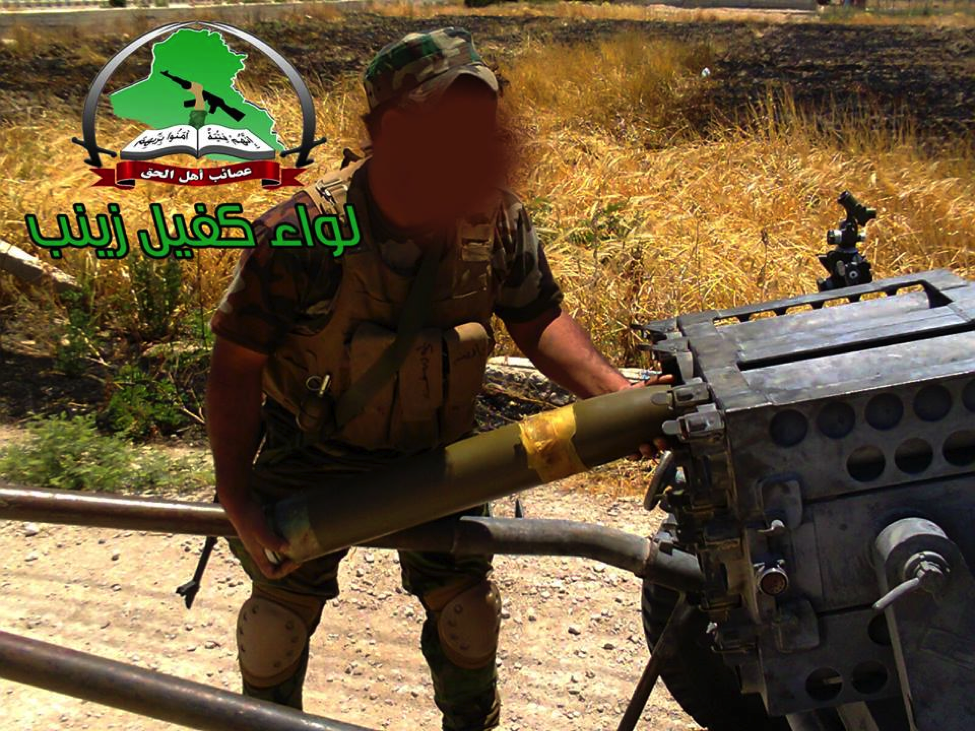
Figure 8: An AAH-LKZ member loads what appears to be a Chinese-made Type 63 107 mm rocket launcher.
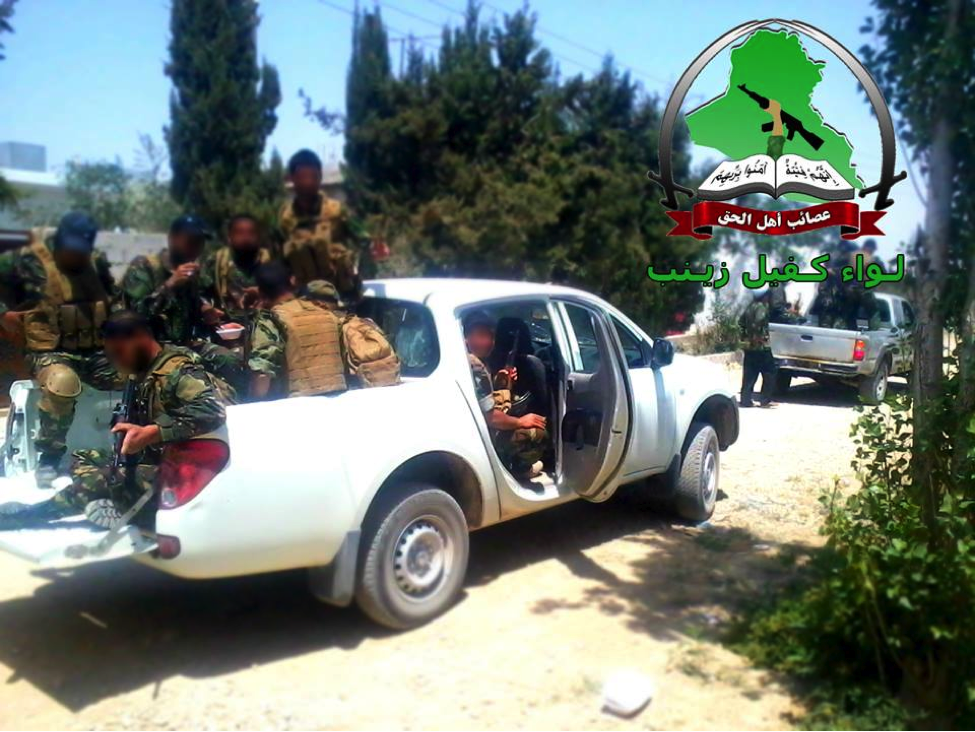
Figure 9: In AAH-LKZ photographic and video propaganda, pickup trucks feature prominently as a tool used to transport their fighters.
In the video clip, AAH-LKZ members are shown playing a popular militant Iraqi Shia song, “Support Those Who Defend Zaynab” by Ali al-Delfi and Ahmed al-Sa’adi. In fact, most AAH-LKZ video clips are set to songs which can be found on
this Hizballah Cavalcade post dealing with militant Shia Iraqi music made for/to praise Shia fighters in Syria.
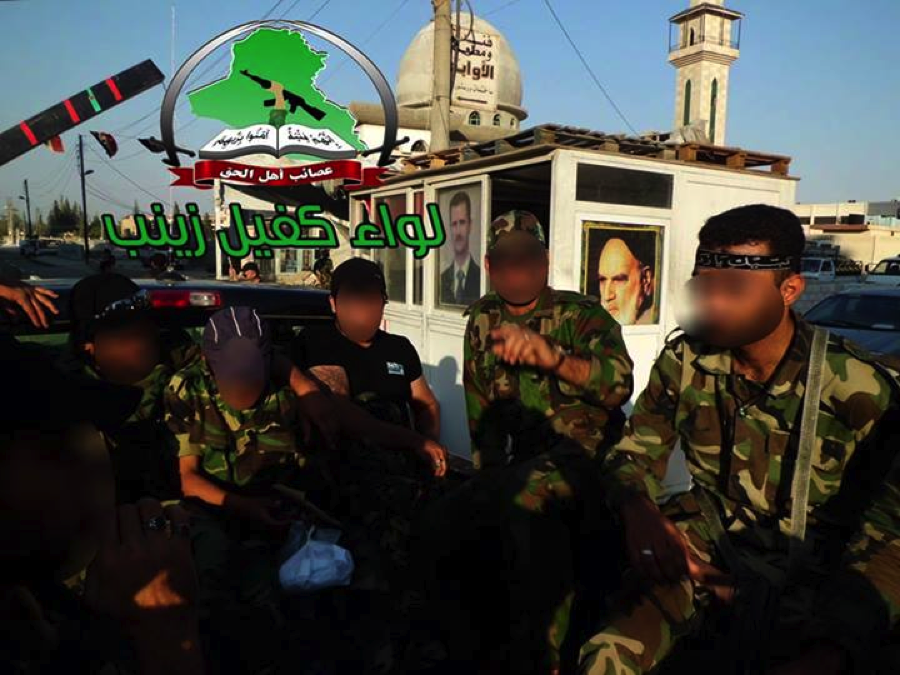 Figure 10: AAH-LKZ members sitting in front of a checkpoint with posters of former Iranian Supreme Leader Ayatollah Khomeini and Syrian leader Bashar al-Assad.
Figure 10: AAH-LKZ members sitting in front of a checkpoint with posters of former Iranian Supreme Leader Ayatollah Khomeini and Syrian leader Bashar al-Assad.
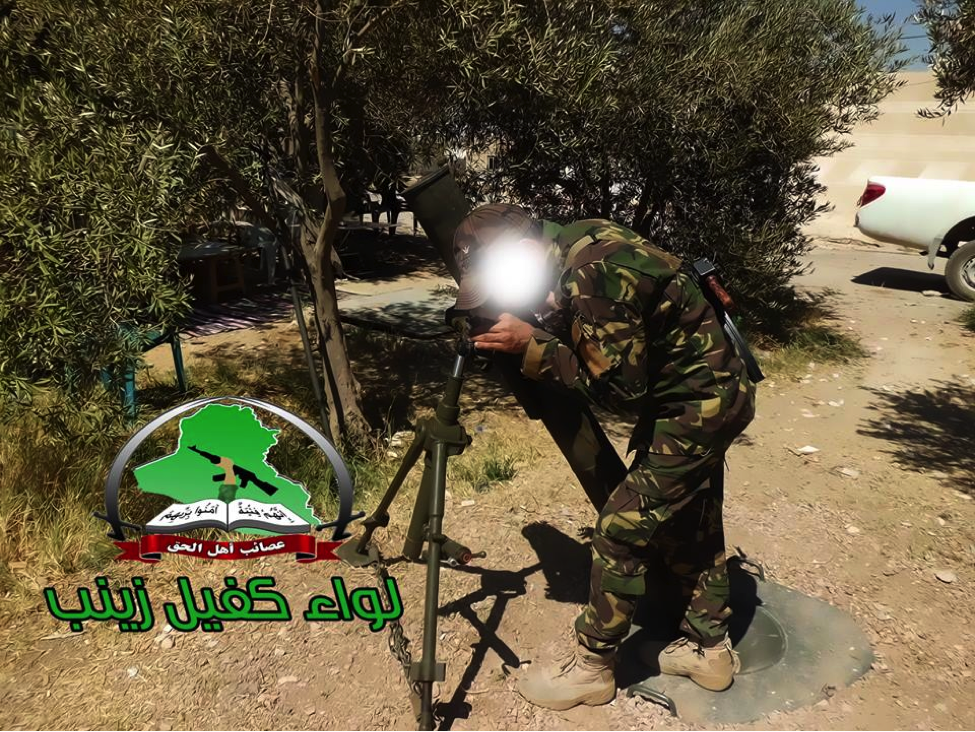 Figure 11: An AAH-LKZ fighter sights a mortar.
Figure 11: An AAH-LKZ fighter sights a mortar.
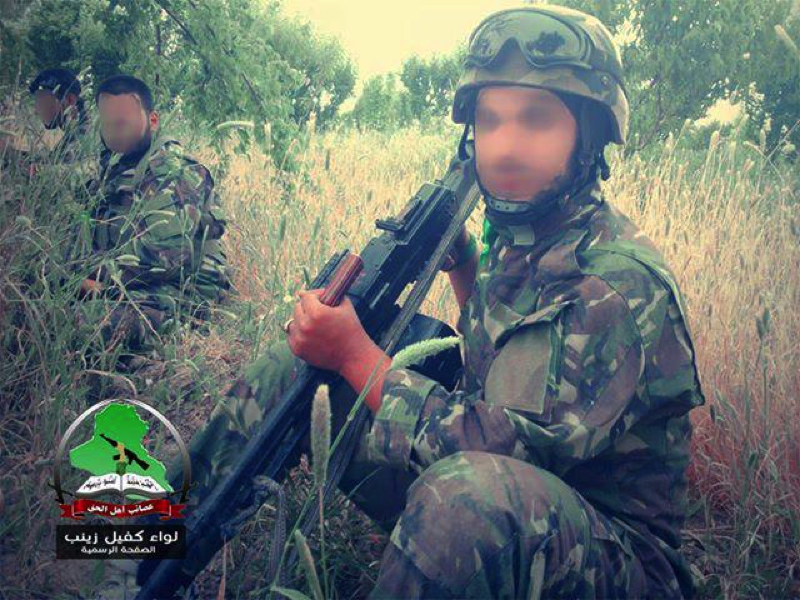 Figure 12: An AAH-LKZ fighter holding a PKM machine gun is shown in a rural setting with two other AAH-LKZ fighters.
Figure 12: An AAH-LKZ fighter holding a PKM machine gun is shown in a rural setting with two other AAH-LKZ fighters.
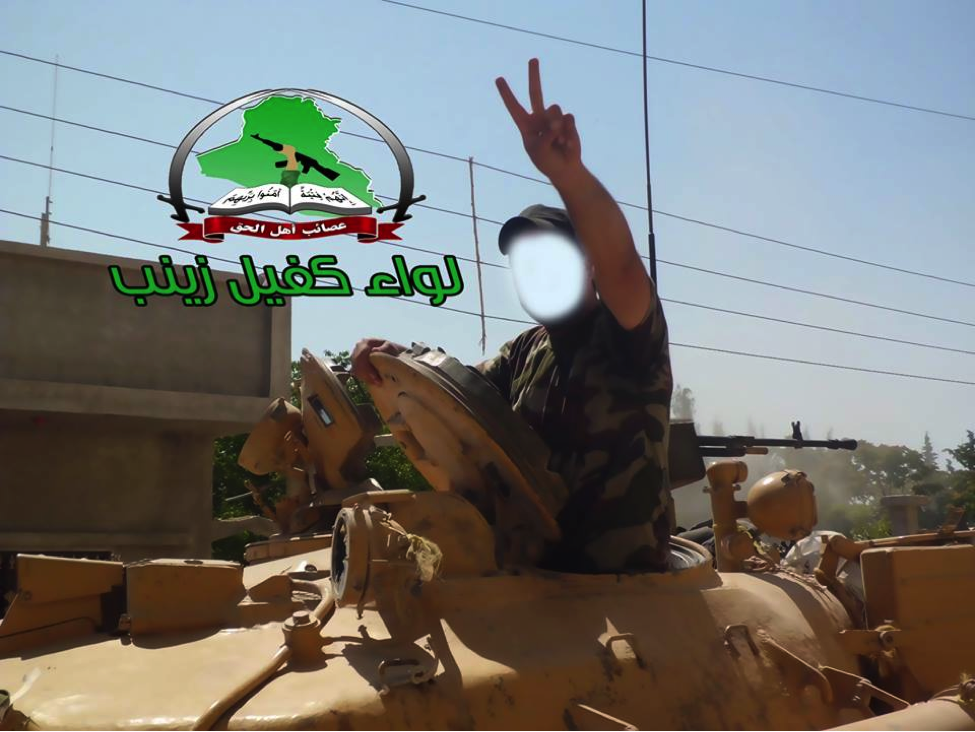 Figure 13: An AAH-LKZ militiaman poses inside a tank turret.
Figure 13: An AAH-LKZ militiaman poses inside a tank turret.
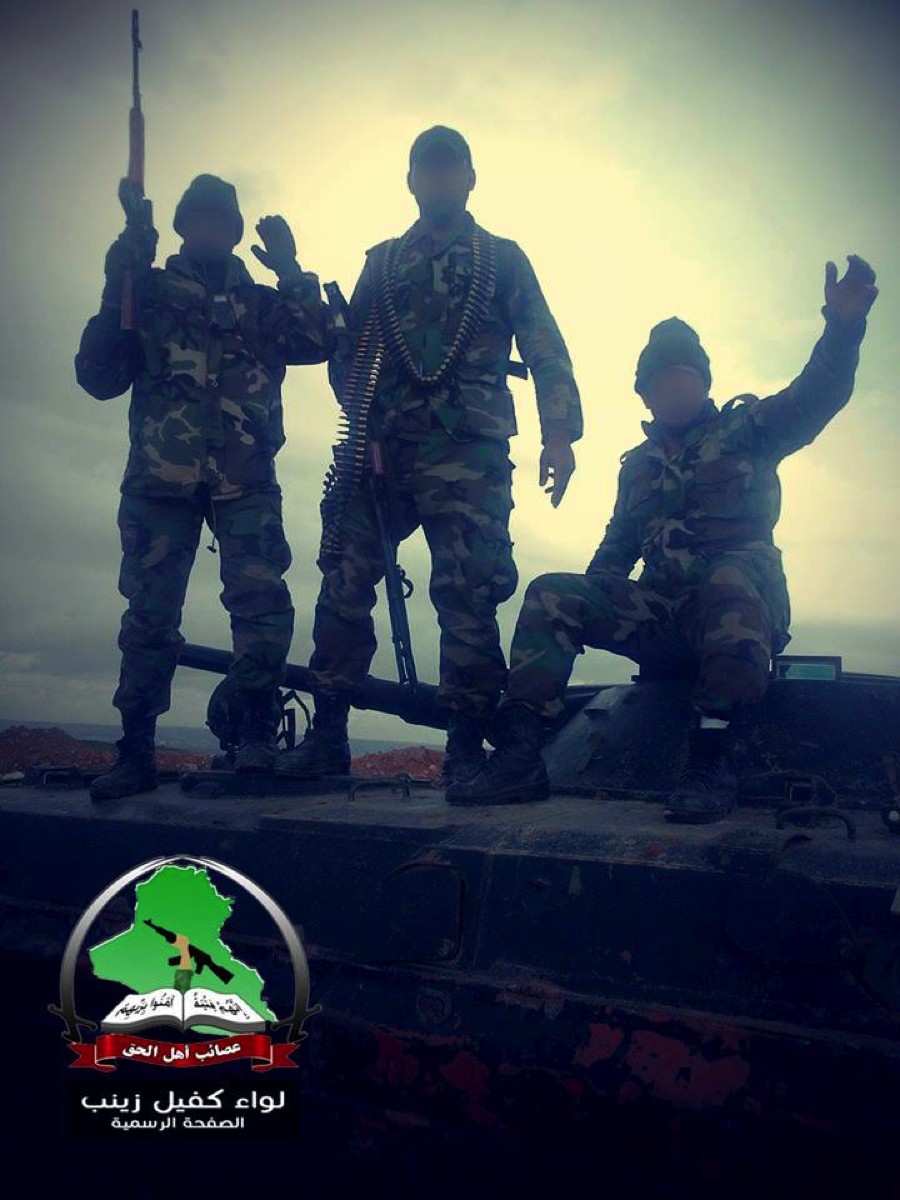 Figure 14: AAH-LKZ members stand atop a BMP-1 infantry fighting vehicle.
Figure 14: AAH-LKZ members stand atop a BMP-1 infantry fighting vehicle.
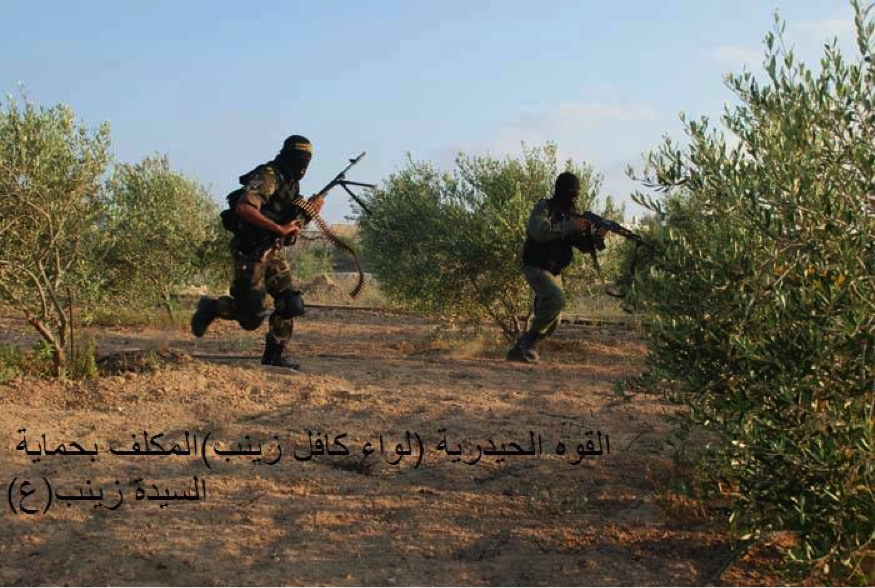 Figure 15: A photo from a pro-AAH Facebook claiming to show members of “Liwa’a Kafeel Zaynab”.
Figure 15: A photo from a pro-AAH Facebook claiming to show members of “Liwa’a Kafeel Zaynab”.
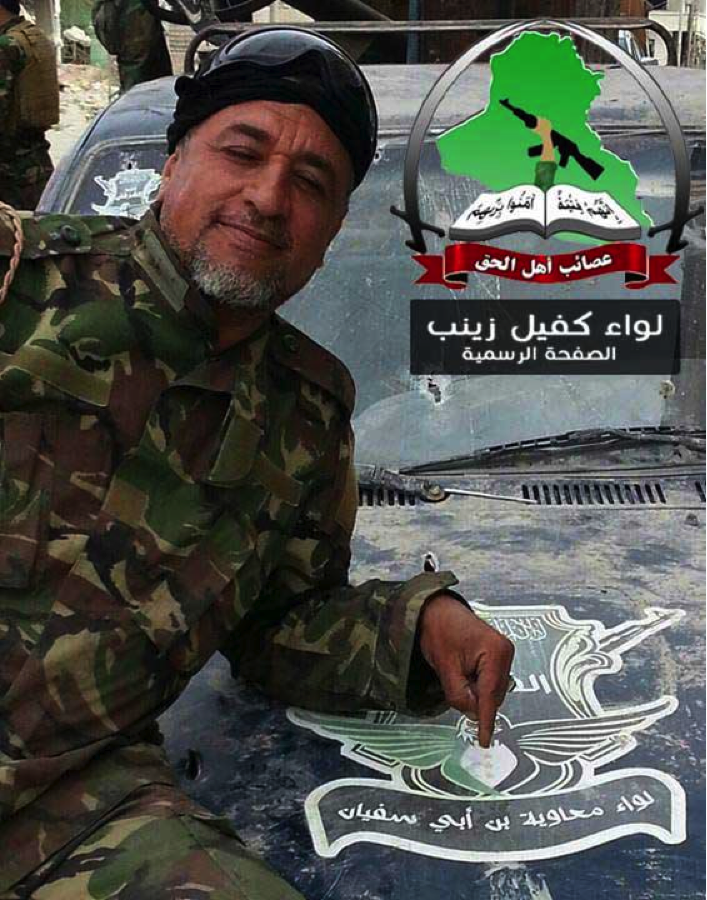 Figure 16: An AAH-LKZ member poses with a destroyed technical belonging to a faction of the Free Syrian Army. The AAH-LKZ member shown was reported killed in Syrian fighting by AAH.
Figure 16: An AAH-LKZ member poses with a destroyed technical belonging to a faction of the Free Syrian Army. The AAH-LKZ member shown was reported killed in Syrian fighting by AAH.
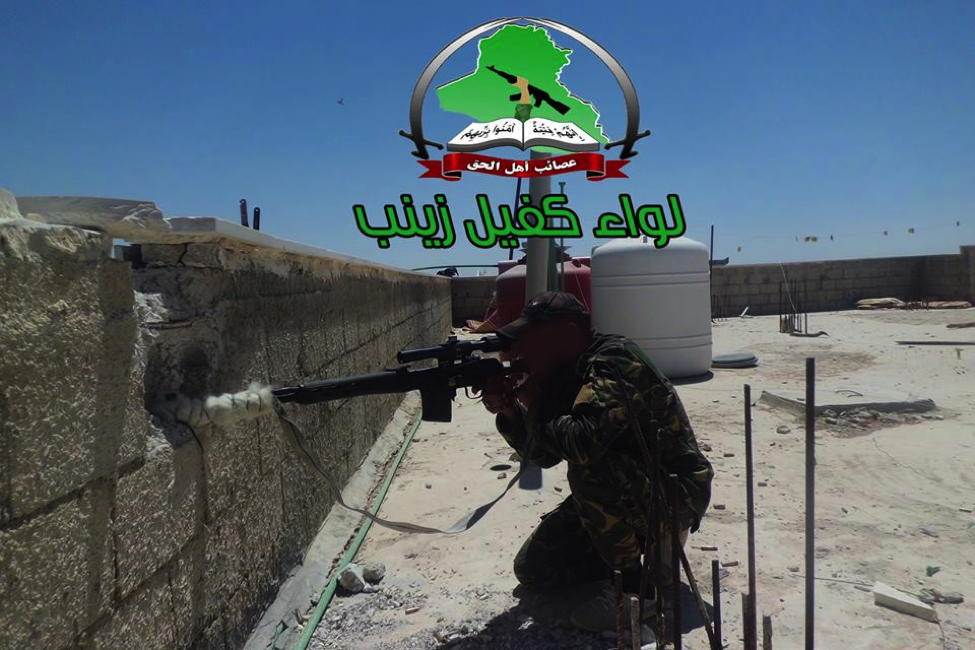 Figure 17: Photographs and videos of AAH-LKZ’s snipers are a regular addition to the group’s social media pages.
Figure 17: Photographs and videos of AAH-LKZ’s snipers are a regular addition to the group’s social media pages.
[youtube=https://www.youtube.com/watch?v=I6vmJOQlK1Q&feature=youtu.be]
[youtube=https://www.youtube.com/watch?v=1bM2RUFp3oI&feature=youtu.be]
AAH-LKZ’s Go-To Martyrs
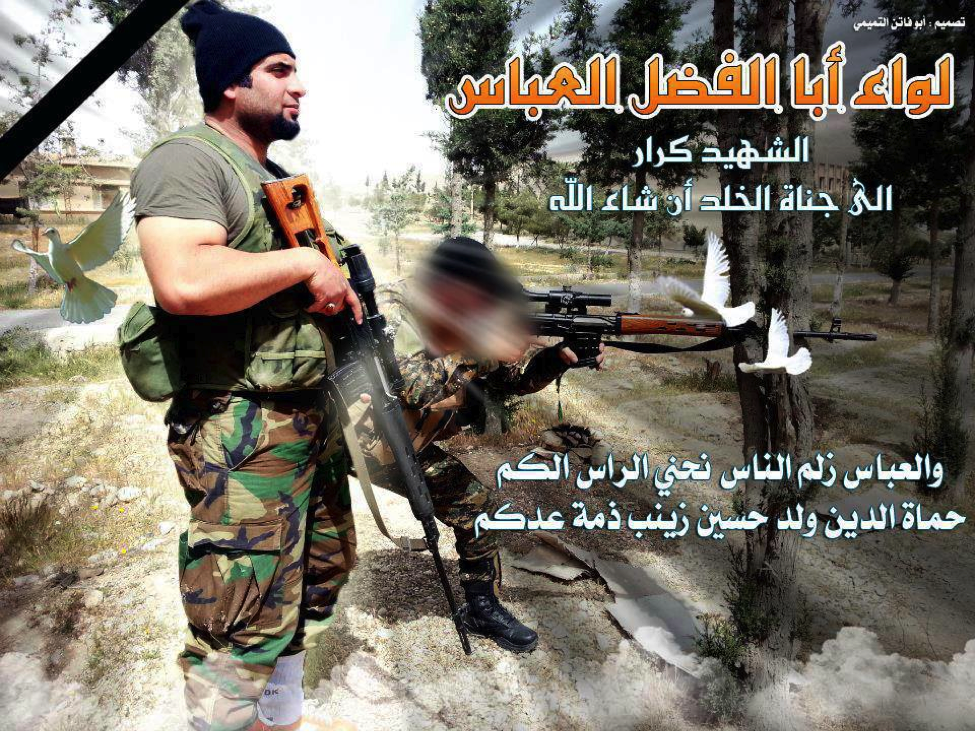 Figure 18: AAH-LKZ’s Karar is shown holding a Dragunov-type sniper rifle in a propaganda poster for Liwa’a Abu Fadl al-Abbas.
Figure 18: AAH-LKZ’s Karar is shown holding a Dragunov-type sniper rifle in a propaganda poster for Liwa’a Abu Fadl al-Abbas.
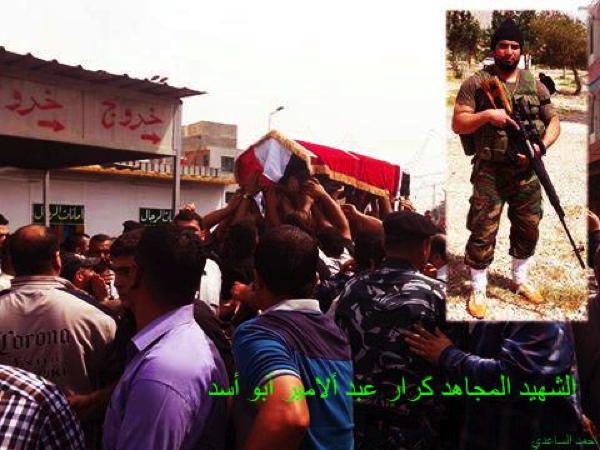 Figure 19: A photo of Karar’s funeral and a shot of him during deployment to Syria. The photo was posted on AAH-LKZ’s official Facebook page.
Figure 19: A photo of Karar’s funeral and a shot of him during deployment to Syria. The photo was posted on AAH-LKZ’s official Facebook page.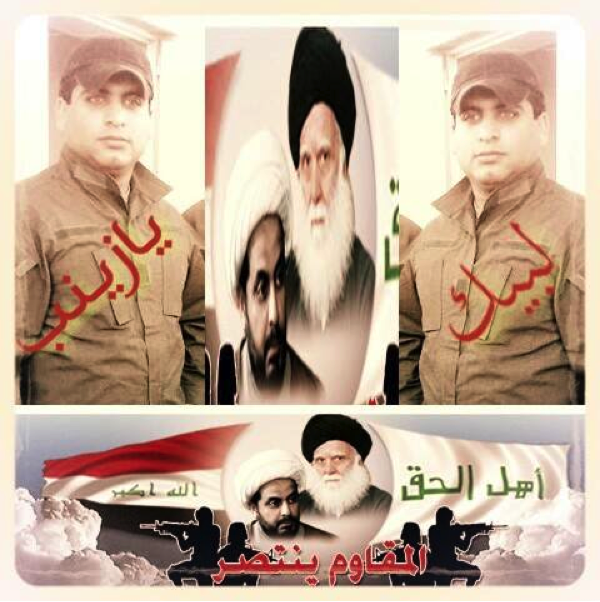 Figure 20: A photo showing Karar’s membership in Asa’ib Ahl al-Haq from his official Facebook martyrdom page.
Figure 20: A photo showing Karar’s membership in Asa’ib Ahl al-Haq from his official Facebook martyrdom page.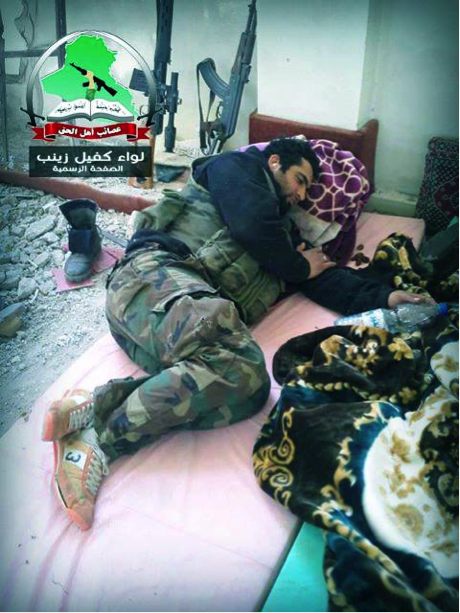
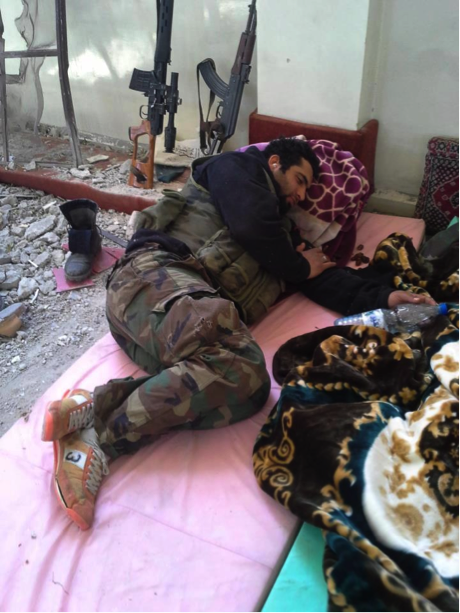 Figure 21: The original LAFA photo for Karar napping (right) with the copy re-released by AAH-LKZ (left).
Figure 21: The original LAFA photo for Karar napping (right) with the copy re-released by AAH-LKZ (left).
Karar Abed al-Amir Fatlawi Abu Assad (A.K.A. Karar Fatlawi and Karar Abed al-Amir Aziz Abu Assad)—often simply referred to as just Karar—has been a main face highlighted by AAH-LKZ as an
